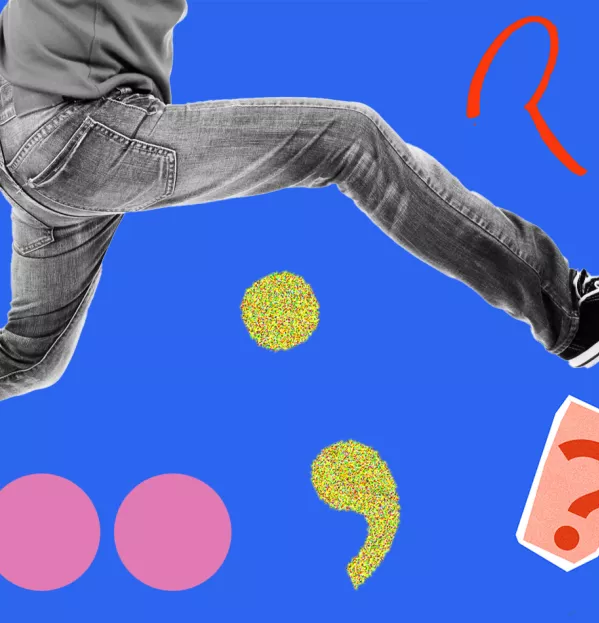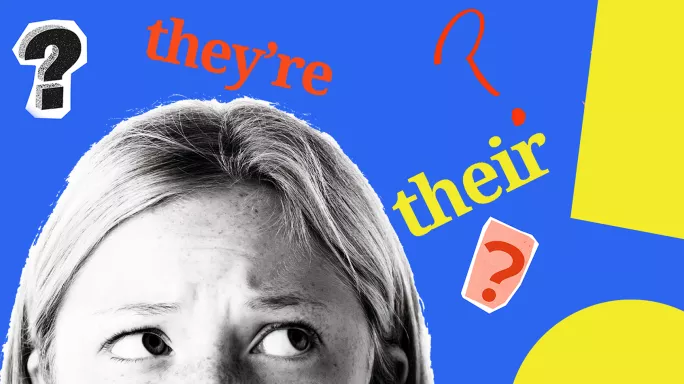
- Home
- Teaching & Learning
- General
- 7 ways to solve the KS3 grammar knowledge problem
7 ways to solve the KS3 grammar knowledge problem

The grammar, punctuation and spelling (GPS) Sat has always been controversial. And since its inception in 2016, the grammar element has been the bit that has caused the most controversy - renowned authors such as Michael Rosen and Philip Pullman have called for the culling of it and many have lamented what they believe is its reduction of English to technical rules.
For secondary school teachers, there’s an additional element to the debate: the grammar proficiency of their Year 7 cohorts does not suggest the test is very effective. When these pupils arrive, what secondary teachers think their level will be based on their Sats results is usually not what the reality demonstrates.
Can that be put down to the well-documented ‘transition’ effect of pupils seemingly dropping in their attainment and knowledge level over the summer, rather than a deficiency with the GPS Sat itself?
In reality, there are a number of barriers to grammar knowledge acquisition - and teacher understanding of the level a pupil is at with grammar - that need to be addressed in key stage 3. For those working in schools, these Sats spats need to be put to one side in the day-to-day of the classroom because the reality teachers face is that grammar matters to outcomes and is tested, and therefore pupils need to learn it.
Below, I have identified some of those key barriers and misunderstandings that impact grammar knowledge for Year 7s and above, and I have offered some solutions.
1. The ‘summer slide’
How much of pupils’ knowledge is lost over the summer? As Alexander et al (2016) note, “the phenomenon of summer learning loss is well documented”. And according to Cooper et al (1996), “the summer loss equalled about one month on a grade-level equivalent scale”.
More concerning still is the Cooper et al finding that the “summer slide” is most likely to impact disadvantaged pupils.
Solution: Undertake baseline literacy testing at the start of Year 7 to identify pupils who have regressed over the summer. As well as highlighting individuals who will require extra support with grammar, it will also provide a list of general grammar weaknesses for classroom teachers to revisit.
2. Not all KS2 students possess solid grammar knowledge
Official Sats data for GPS in 2023 shows that “72 per cent of pupils met the expected standard”. This means that around a quarter of pupils didn’t meet the minimum standard.
But what exactly is the expected GPS standard?
In 2023, the raw mark threshold was 36 out of 70, meaning just over half marks (51%) were required to reach the expected standard. It’s safe to assume, therefore, that even pupils who passed might still have grammar knowledge gaps.
What’s more, the test format further undermines the idea that pupils passing the GPS have solid grammar knowledge.
As primary teacher Sophie Bartlett points out, the seven areas in the GPS framework “are not all weighted equally, with punctuation having the most content”.

Moreover, Bartlett notes, the 20-mark spelling test “gives a bit more leeway to strong spellers, which allows for weaknesses in the grammar test”.
In practice, a child scoring full marks on the spelling test “would only need 16/50 on the grammar test to still reach the expected standard overall”.
It’s important, therefore, to place new grammar knowledge into perspective. KS3 teachers shouldn’t expect a class of mini David Crystals.
Solution: Use GPS-style targeted grammar questions during baseline tests to determine which pupils will need more in-class support.
3. KS2 and KS3 grammar are very different
There are fundamental differences between what constitutes KS2 and KS3 grammar. As Ian Cushing argues in his 2018 paper Grammar policy and pedagogy from primary to secondary school, grammar policy is ‘incongruous’.
Primary grammar is generally prescriptive, “framing language as a system of constraints and rules”, while secondary grammar “is much more geared towards descriptive, functional linguistics”.
In other words, at primary school the focus is on technical terms, but at secondary school grammar is used to find meaning in authentic texts.
Unless pupils can bridge the pedagogical grammar gap between KS2 and KS3, knowledge of complex terminology is likely to be of limited value. Grammar knowledge gains at KS2 can become dwarfed by the reality of KS3 curriculum demands.
Solution: Ensure KS3 teachers have a greater awareness of the GPS content. Similarly, it would be beneficial for primary teachers to gain a greater understanding of grammar pedagogy at KS3. Ideally, post-Sats literacy would explore grammar in a more contextualised way, which can improve both writing ability and critical appreciation.
4. KS3 academic writing brings further grammar challenges
Noting the increasing challenge of academic writing at secondary level, Deignan et al (2022) give examples of grammatical features required to flourish at KS3, including nominalisation, post-modifying prepositional phrases and grammatical metaphor.
This change in emphasis from narrative to analytical texts leaves many students floundering. Even those who mastered grammar definitions at KS2 struggle with this sudden shift.

Solution: Make explicit reference to different grammar usage. As Sarah Cottingham argues in her 2023 book Ausubel’s Meaningful Learning in Action, pupils need prompting to draw on existing knowledge before being taught the detail. General reminders about KS2 grammar will improve their assimilation of specific new KS3 knowledge.
5. Poor grammar knowledge among secondary teachers
Most secondary school teachers are subject specialists. But that doesn’t mean they are grammar specialists. While primary school teachers have had to sharpen their grammar knowledge, many secondary colleagues still struggle.
Take English teachers, for example. As Marcello Giovanelli states in his 2015 paper Becoming an English language teacher: linguistic knowledge, anxieties and the shifting sense of identity, “the percentage of trainee teachers coming onto courses with single honours qualifications in English language or linguistics is low”.
Indeed, English teachers tend to feel anxious about their grammar subject knowledge or, alternatively, research has found they can “overestimate their linguistic content knowledge”. Unsurprisingly, secondary English teachers lack an understanding of the most effective grammar teaching strategies.
Solution: Audit the department’s grammar knowledge to identify gaps. Then provide formal and informal CPD opportunities, sharing existing expertise or seeking out external support.
6. Viewing grammar as the responsibility of English teachers
As well as different types of grammar, transition also involves moving from one teacher to multiple teachers. And because secondary teachers spend less time with individual pupils, they have fewer opportunities to detect and remedy grammatical misconceptions.
Usually, English teachers are expected to fill this grammar gap. Yet, as we have seen, not all English teachers possess this subject knowledge.
Furthermore, teachers of all subjects need to take responsibility for developing pupils’ understanding of grammar. As Webb and Giovanelli make clear in their 2023 book Essential Grammar: “though grammar is a fundamental part of teaching English, it’s not confined to English”.
Solution: Dedicate some whole-school CPD time to the role of grammar pedagogy in disciplinary literacy. Ensure this dispels the myth that grammar is the preserve of the English department.
7. KS2/KS3 collaboration is difficult
To reduce grammar learning loss, greater primary-secondary cooperation is necessary. Yet effective collaboration requires three things in short supply in schools: resources, funding and time. Organising primary-secondary CPD sessions can prove especially challenging in schools with many feeder primaries.
Solution: Start small, with a pilot project between a few secondary and primary colleagues. To make sure the work is mutually beneficial, allow participants to address weaknesses, but also, crucially, to showcase their own areas of expertise.
Ultimately, preventing grammar learning loss at transition requires a multifaceted approach. Only by anticipating potential barriers, and planning a range of solutions, can we ensure children bridge the grammar gap as they move to secondary school.
Mark Roberts is director of research and English teacher at Carrickfergus Grammar School in Northern Ireland
For the latest research, pedagogy and practical classroom advice delivered directly to your inbox every week, sign up to our Teaching Essentials newsletter
You need a Tes subscription to read this article
Subscribe now to read this article and get other subscriber-only content:
- Unlimited access to all Tes magazine content
- Exclusive subscriber-only stories
- Award-winning email newsletters
- Unlimited access to all Tes magazine content
- Exclusive subscriber-only stories
- Award-winning email newsletters
You need a subscription to read this article
Subscribe now to read this article and get other subscriber-only content, including:
- Unlimited access to all Tes magazine content
- Exclusive subscriber-only stories
- Award-winning email newsletters
- Unlimited access to all Tes magazine content
- Exclusive subscriber-only stories
- Award-winning email newsletters
topics in this article



